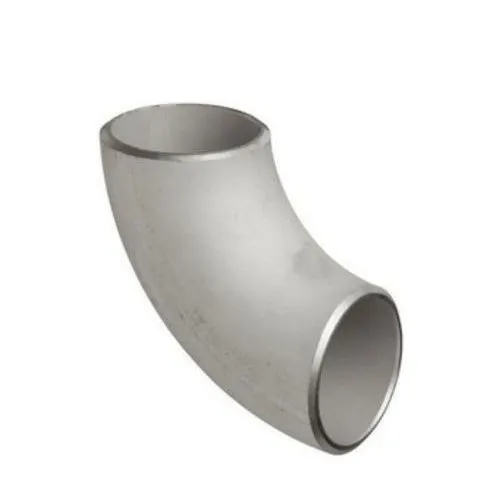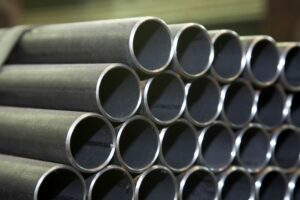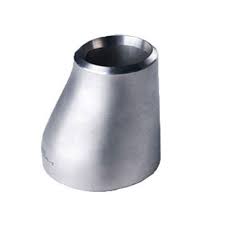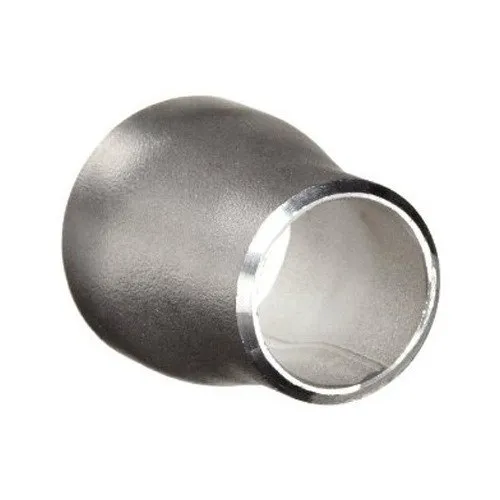
What is a butt weld elbow? A butt weld elbow is a type of pipe fitting used to change the
SSM’s carbon steel pipes:
Standards:
ASTM A53 B/ ASTM A106 Gr. B/ASTM A179/ASTM A192/ ASTM A333/API 5L Gr B to X70
Sizes:
– Outer diameters from 1/2″ to 60″
– Thickness from sch10 to sch 160
– Thickness ranging from 2mm to 45mm
Coatings:
– 3PE (Three-Layer Polyethylene)
– FBE (Fusion-Bonded Epoxy)
– Zinc Coating
Share:

A carbon steel pipe is a type of steel pipe primarily composed of carbon and iron, with small amounts of other elements such as manganese, sulfur, and phosphorus. Carbon steel pipes are known for their strength, affordability, and versatility. They are widely used in various industrial applications, including construction, oil and gas, plumbing, automotive, and more.\
1. Composition:
– Carbon Steel Pipe: Carbon steel pipes are primarily composed of iron and carbon, with carbon content typically ranging from 0.05% to 2.0%. The carbon content affects the hardness, strength, and machinability of the steel. Low-carbon and mild steel have lower carbon content, while high-carbon steel has a higher carbon content.
– Stainless Steel Pipe: Stainless steel pipes are made primarily from iron, chromium, nickel, and other alloying elements. Chromium is the key element that provides stainless steel with its corrosion resistance. Depending on the grade, stainless steel may also contain elements like molybdenum, titanium, and niobium.
2. Corrosion Resistance:
– Carbon Steel Pipe: Carbon steel is susceptible to corrosion and rust when exposed to moisture and corrosive environments. It may require protective coatings or treatments to prevent corrosion.
– Stainless Steel Pipe: Stainless steel is highly corrosion-resistant due to the presence of chromium, which forms a protective oxide layer on the surface of the steel. This oxide layer prevents further corrosion, making stainless steel suitable for use in corrosive environments without the need for additional coatings.
3. Strength:
– Carbon Steel Pipe: Carbon steel pipes offer high tensile strength and are suitable for applications where structural integrity and load-bearing capacity are important.
– Stainless Steel Pipe: Stainless steel pipes also have good strength properties, but they may not be as strong as some high-strength carbon steel grades.
4. Cost:
– Carbon Steel Pipe: Carbon steel is generally more cost-effective than stainless steel, making carbon steel pipes a popular choice in many industries where cost is a primary consideration.
– Stainless Steel Pipe: Stainless steel is more expensive than carbon steel due to the alloying elements used in its composition.
5. Applications:
– Carbon Steel Pipe: Carbon steel pipes are used in a wide range of industries and applications, including construction, oil and gas, plumbing, automotive, and structural applications.
– Stainless Steel Pipe: Stainless steel pipes are preferred in applications where corrosion resistance, hygiene, or aesthetic appearance is critical. They are commonly used in industries such as food processing, pharmaceuticals, chemical processing, and architectural applications.
In summary, the choice between carbon steel and stainless steel pipes depends on the specific requirements of the application, including factors like corrosion resistance, strength, cost, and environmental conditions. Each type of steel has its own advantages and is selected based on the needs of the project or industry.
Carbon steel pipes are a crucial component in various industries, known for their strength, durability, and versatility. Sino Special Metal (SSM) offers a range of carbon steel pipes that meet different standards and specifications to cater to diverse applications. Here are some key details about SSM’s carbon steel pipes:
Standards: SSM provides carbon steel pipes that adhere to several recognized standards, including:
– ASTM A53 B
– ASTM A106 :Standard Specification for Seamless Carbon Steel Pipe for High-Temperature Service

– ASTM A179:Standard Specification for Seamless Cold-Drawn Low-Carbon Steel Heat-Exchanger and Condenser Tubes
Chemical Composition: The steel shall conform to the following requirements as to chemical composition:
| Carbon, % | 0.06–0.18 |
| Manganese, % | 0.27–0.63 |
| Phosphorus, max, % | 0.035 |
| Sulfur, max, % | 0.035 |
– ASTM A192
– ASTM A333:Standard Specification for Seamless and Welded Steel Pipe for Low-Temperature Service

– API 5L Gr B to X70
Sizes: SSM offers a wide range of sizes to accommodate various needs:
– Outer diameters from 1/2″ to 60″
– Thickness from sch10 to sch 160
– Thickness ranging from 2mm to 45mm
Coatings: Depending on client requirements and the specific application, SSM can apply various coatings to carbon steel pipes. These coatings enhance the pipes’ durability and corrosion resistance. Common coatings include:
– 3PE (Three-Layer Polyethylene)
– FBE (Fusion-Bonded Epoxy)
– Zinc Coating
In addition to these coatings, SSM also offers options for Solid CRA (Corrosion-Resistant Alloy), Clad, or Lined alloy steel for applications that demand even higher levels of corrosion resistance or specialized properties.
SSM’s commitment to providing a range of carbon steel pipes with different standards, sizes, and coatings allows customers to find the right solution for their specific industrial or construction needs. These carbon steel pipes are used in industries such as oil and gas, petrochemical, construction, and more, where reliability and performance are paramount.

What is a butt weld elbow? A butt weld elbow is a type of pipe fitting used to change the

At SINO SPECIAL METAL, we provide high-quality butt weld eccentric reducers, essential fittings used in piping systems to seamlessly connect

What is a Butt Weld Concentric Reducer At SINO SPECIAL METAL, we offer high-quality butt weld concentric reducers, pivotal components
SSM stands as a premier supplier enterprise, renowned for its specialization in crafting high-quality special metal products. Our commitment to excellence and precision in production ensures that your unique metal requirements are not just met but exceeded. Discover the quality that defines SSM as a leading name in the industry.